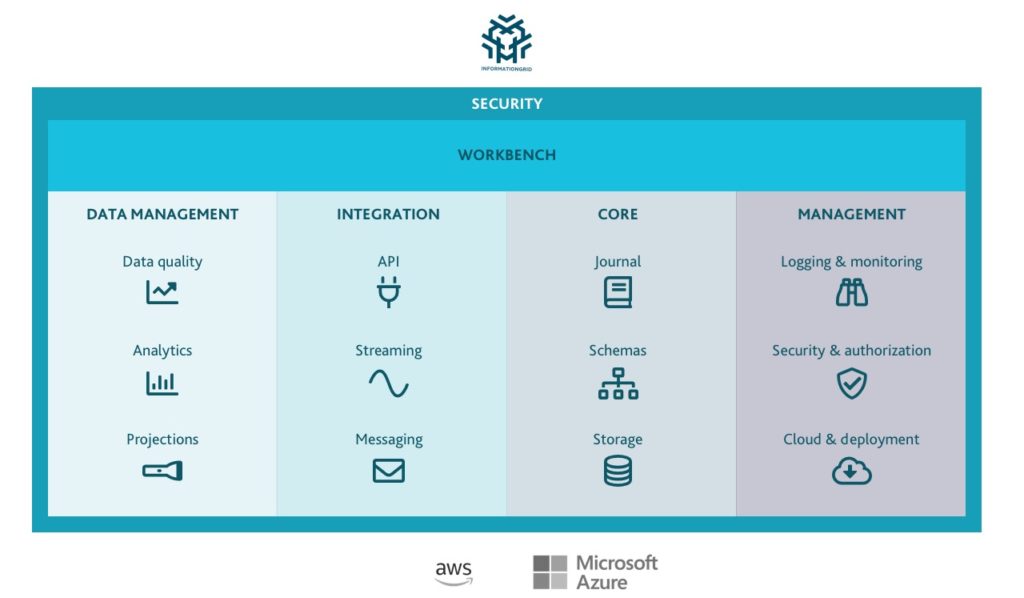Architecture
An architecture fit for these volatile, data-intensive times
We take architecture very seriously. InformationGrid was developed on the basis of strong architectural principles which guarantee a maximum fit with todays and tomorrows requirements.
Four main principles
Data will outlive applications
Applications, channels, languages and frameworks will change, but data as a core strategic asset will increase in value over time. This means data has to be managed well and stored in timeless open formats.
Resilience and designed for change
Data, a source for historic analysis and AI, as well as applications are more and more subject to changing contexts. This fact needs to be taken into account during designing and supported by the underlying technology and platforms.
Compliance and security are distinctive factors
Every application will require data management, data lineage and data governance at some point.’
Increased development productivity
Using domain models to model real life events will shorten the analysis and test phase. Domain Specific Languages (DSL) will extend high level programming languages with easier and safer logic and mappings.
Capabilities
Cloud infrastructure
InformationGrid is a Data-as-a-Service (DAAS) platform based on a proven and fully configured and managed cloud-native infrastructure. This enables high levels of security, scalability and versatile infrastructure costs.
Event sourcing & CQRS
InformationGrid contains a full implementation of event sourcing which gives you a head start. The Command Query Responsibility Segregation (CQRS) pattern is used to create a strict separation between read and write operations. This enables better performance, fault tolerance and perfect traceability of distributed data.
Cloud data storage
Fully managed cloud-based polyglot data storage enabling a fit for purpose data technology strategy (NoSQL, Document store, graph etc.)
Product architecture
InformationGrid is based on a modular architecture. This enables easier development, integration and upgrades, plus there are fewer dependencies. The InformationGrid core consists of storage adapters that connect to various types of cloud databases (NoSQL, document, graph etc.). Data is modelled into information by defining schemas. The journal stores all the events.

Technology and standards
The following technologies are being used in InformationGrid:
Cloud infrastructure: rich cloud-native using infrastructure components
like Helm, Kubernetes, Crossplane, and Docker
Streaming: Apache Kafka
Storage: MongoDB, JanusGraph and various SQL databases
Search: ElasticSearch and OpenSearch
